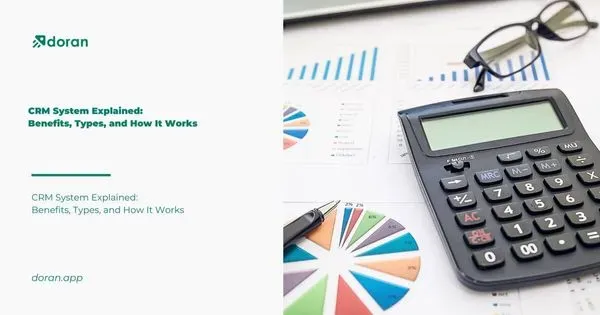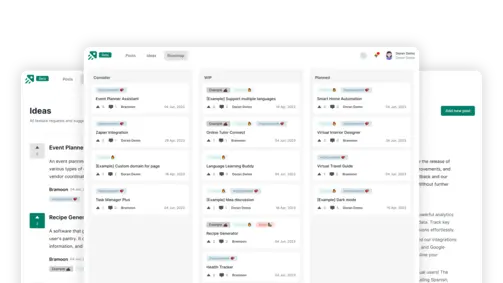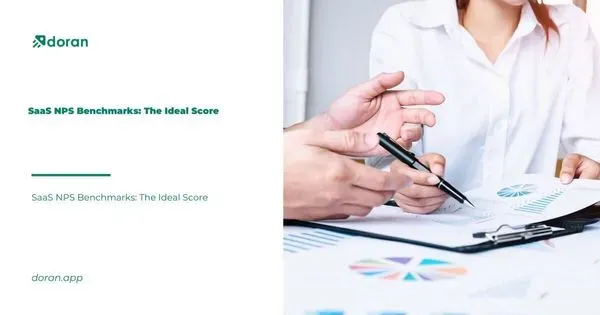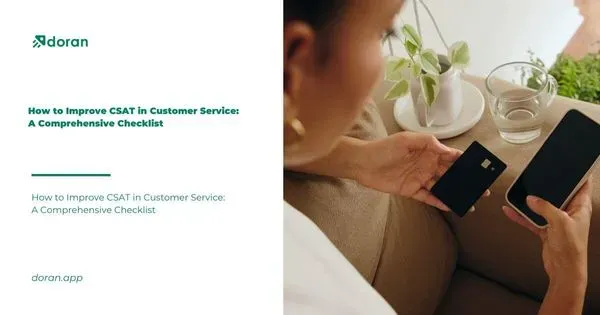B2B SaaS Sales Strategy: 5 Proven Suggestions
Create changelog and product roadmap for your product
Explore nowTable of contents 6 min
In the fast-paced B2B SaaS industry, implementing an effective B2B SaaS sales strategy is crucial for success. To win the competition and maximize revenue, businesses need to execute proven techniques specific only to the SaaS industry. In this article, we will explore five proven B2B SaaS sales strategies that have been successful in increasing conversion rate, attracting new clients, and driving sustainable growth.
Create a Portfolio of Apps with a Specific Focus
The first step of implementing a successful B2B SaaS sales strategy is to create a portfolio of apps with a specific focus.
It may seem like you’ve found gold when you enter a store and see the shelves loaded with goods; after all, the store nearly certainly has what you’re looking for. On the other hand, the experience for B2B SaaS buyers is quite different. A digital marketplace with a lot of apps would quickly overwhelm customers.

You should therefore begin modestly with software that is specifically aimed at your target market. As an expert advisor, you can guide your customers to the options that will best solve their problems by curating the options available to them.
Land, Engage and Expand is the model that you should follow, which includes:
-
Land: Begin with two or three cloud services related to your main line of business, such as security or productivity apps. You can keep the value proposition simple by sticking with these “anchor apps,” at least initially. This makes it simple for internal stakeholders and customers to understand and recognize the value of your solutions.
-
Engage: Once you begin to realize sales, you should encourage customer onboarding and engagement to build stickiness. Webcasts, tutorials, and access to a knowledge centre where customers can go to learn more about your solutions can keep them informed.
-
Expand: You can begin to broaden your portfolio to include related and/or specialized apps after you see that your customers are comfortable with your offerings. For instance, including a Symantec security solution for office productivity makes sense if you already offer Microsoft Office 365.
Create an Intriguing Value Proposition
The next piece of advice in executing a successful B2B SaaS sales strategy is to create an intriguing value proposition. Customers will appreciate the value of your B2B SaaS products if you explain why they are applicable to them and how they differ from your rivals. Putting the client at the center of growth is the first of five tested tactics from the world’s top salespeople that McKinsey & Company described in a recent report. “B2B companies need to take a customer-first approach and develop individualized, natural buying journeys that excite, fascinate, convert, and keep customers stay with them.”
Find out more: The Importance of customer feedback to SaaS Founders

Other deal-breakers are to create multichannel engagements that are simpler and stick to the following best practices:
-
Identify my needs: Predictive and prescriptive analytics is successfully used by high-performing businesses to provide 360-degree views of both new and existing consumers, including behavior and intent.
-
Customize for me: To connect with the suitable person at the right time, B2B organizations are hyper-personalizing marketing across touchpoints.
-
Surprise me: Customers want effortless buying experiences because they use over ten different channels. The likelihood of losing a customer increases with fragmentation in marketing and sales.
Use Technology Advisors to Increase SaaS Sales and Communication with Consumers
Mobile devices have led us to think that apps will sell themselves. But it’s just not true when it comes to B2B SaaS. Buyers are still in need of human support. Over 90% of first sales take place through offline channels like call centers and field sales, even when a digital marketplace offers a small, customized app portfolio.
According to the AppDirect Small Business Software Trends Report 2021, a growing percentage of SMBs—nearly 48 per cent—are looking for the advice of outside experts, including ISPs and telecom service providers, as well as technology advisors like consultants, channel partners, and telecom agents.
In real life, SMBs’ purchasing decisions are becoming more influenced by IT advisors. Many business buyers feel that working with an advisor would help them get higher ROI from their technology purchases as they struggle to make the best decisions in a complex and crowded technological environment.
But a cloud marketplace is still necessary. These online stores can help your sales staff generate qualified leads. The mixture of online and offline channels is a way to build a strong foundation for organic up- and cross-sell opportunities. Many customers will make more self-service purchases once they feel comfortable using a marketplace.
Give Priority to Onboarding

You should always take onboarding with great consideration when wondering how to sell SaaS product. Your customers will be gratefully onboarding if you can help them activate, set up, and maybe migrate data to new SaaS services. Additionally, it is necessary for a profitable SaaS sales strategy.
An effective onboarding process increases the retention rate, builds customer trust, and opens doors for cross- and up-selling. About three-quarters of firms need onboarding and are ready to pay for it since it is valuable.
Read more: How to Collect Customer Feedback Effectively
Simplify Your Free Trials
Our last advice for a proven B2B SaaS sales strategy is to make your free trials as simple as possible.
When selling B2B SaaS, an easy three-step activation that only needs basic registration (an email address and a password) is more appealing to potential customers. By establishing a sequence of communications to interact with your clients as the trial continues, you can maintain the momentum. This may lead to a conversion rate from free to paid off, anything between 20 and 40%.
As the B2B SaaS landscape continues to evolve, implementing the right B2B SaaS sales strategy is essential to staying ahead of the competition. From nurturing long-term relationships to demonstrating value through personalized solutions, the five strategies covered in this article provide a solid foundation for achieving success in the SaaS industry. By consistently refining and adapting your sales approach, you can position your B2B SaaS company as a trusted industry leader, ready to achieve new heights in the dynamic world of technology.
What to not miss out on our blog
Gain insightful knowledge and invaluable experiences from dedicated experts.

CRM System Explained: Benefits, Types, and How It Works
Discover everything about CRM system. Learn the benefits and how a CRM system works to improve customer relationships and streamline business operations.

Are you ready? Start your free trial today.
Enhance communication, keep track of the progress, understand customers' insight and more by taking your first trial on Doran.
Sign up for free


